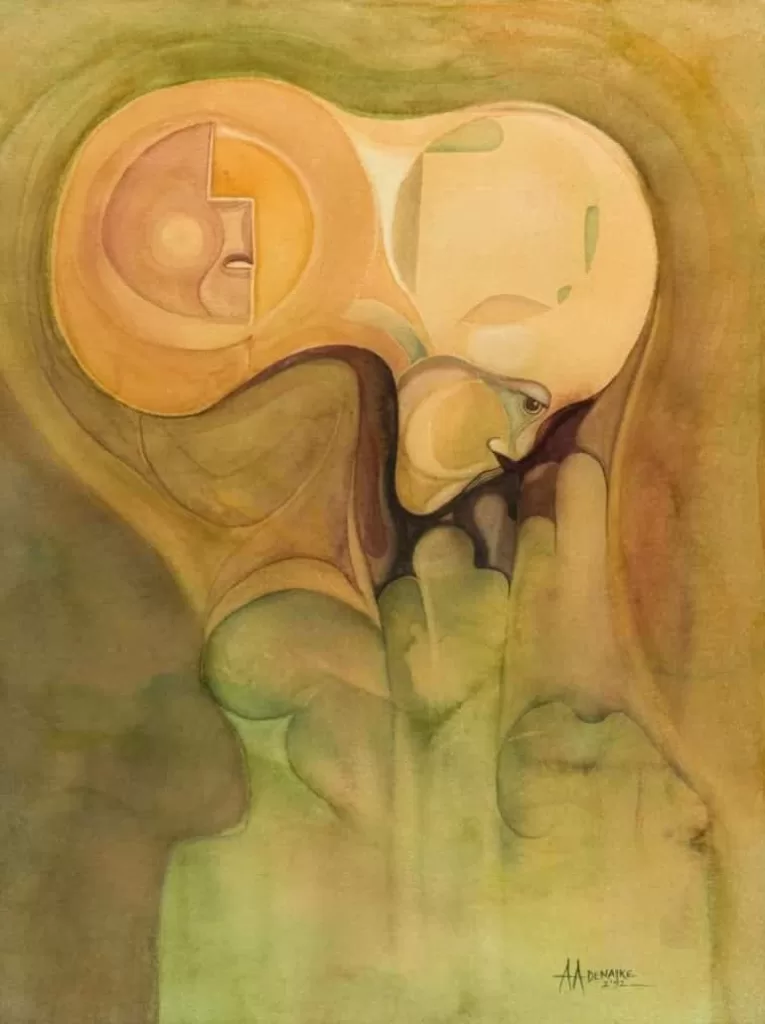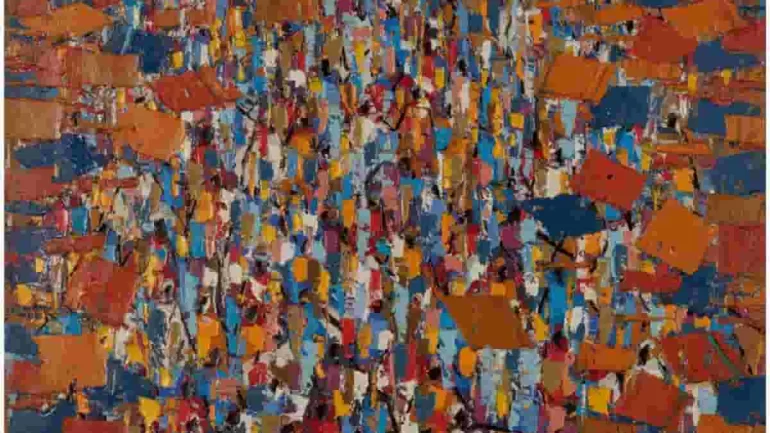ART REVIEW
Modern African identity, heritage, and global creativity take center stage in Afropolitan: Contemporary African Arts at NOMA.
BY KAZEEM ADELEKE, ARTCENTRON
Afropolitan: Contemporary African Arts at NOMA is a landmark exhibition that showcases the evolution of modern and contemporary African art within a global framework. On view through December 2025 at the New Orleans Museum of Art (NOMA), the exhibition features a range of pioneering African artists from the twentieth and twenty-first centuries. Through new media, historical references, and diverse cultural influences, these artists challenge colonial narratives and reflect the energy of contemporary African cities.
By dispersing artworks across NOMA’s galleries—including the third-floor African art gallery, the McDermott International, Inc. Elevator Lobby, and the Sydney and Walda Besthoff Sculpture Garden—the exhibition encourages multidimensional engagement and reframes the African art collection within a global, urban, and contemporary perspective.
What Is Afropolitanism?
At the core of this exhibition lies the theoretical framework of Afropolitanism, a term popularized by writer Taiye Selasi. Afropolitanism goes beyond cosmopolitanism; it affirms a transnational African identity shaped by migration, hybridity, and urban life. In this context, African artists are not merely global citizens—they are Africans of the world, navigating between tradition and modernity, locality and globality.
This philosophical lens brings cohesion to a diverse set of works that interrogate race, power, identity, and material culture. The exhibition speaks to a globalized Africa, yet remains deeply rooted in the specificity of lived African experiences.
Featured Artists and Works
Tayo Adenaike—His Breath Made Man (1992)
A master of watercolor, Nigerian artist Tayo Adenaike infuses his compositions with spiritual and philosophical inquiry. In His Breath Made Man, Adenaike draws upon traditional Uli and Nsibidi symbols, fusing them with biblical allusions. The work addresses themes of creation, mortality, and cultural continuity. His practice positions him within a broader movement of postcolonial Nigerian artists who reframe indigenous aesthetics through a modernist lens.
Contemporary African Arts at NOMA

Ablade Glover—Market Lane II (1998)
Ablade Glover, a Ghanaian painter, captures the pulsating rhythm of African marketplaces in Market Lane II. Rendered in thick impasto, the painting exudes motion, color, and sound. Glover’s work represents a crucial chapter in Ghana’s post-independence art history and reflects his background as both educator and founder of the Art Alliance Gallery in Accra. Through his oil technique, Glover transforms everyday market life into a site of cultural affirmation and socio-economic dialogue.
Elias Sime—Tightrope: Behind the Processor #2 (2022)
Ethiopian artist Elias Sime employs discarded electronic components to create dense, tactile compositions. Tightrope: Behind the Processor #2 exemplifies his environmentally conscious practice. Sime reclaims obsolete technology—wires, circuit boards, and silicon wafers—as metaphors for connectivity and global capitalism. His works critique overconsumption while celebrating African ingenuity in a digital age. They stand at the intersection of art, ecology, and infrastructure.
Wole Lagunju—Urban King II
Wole Lagunju, born in Oshogbo, Nigeria, merges traditional Yoruba aesthetics with European iconography. Urban King II exemplifies his signature fusion of Gelede mask traditions and Western portraiture, challenging normative depictions of race, gender, and power. Lagunju’s work references the Dutch Golden Age, the Elizabethan court, and 20th-century Western fashion to deconstruct colonial narratives. His contribution speaks directly to Afropolitan ideals of cultural hybridity and reinterpretation.
This acquisition was made possible through the efforts of Amanda Maples, Natasha Schlesinger, and the support of collector Sue Hostetler Wrigley. The work’s inclusion marks a significant institutional step in decolonizing museum collections and foregrounding African perspectives.
Serge Attukwei Clottey—Afrogallonism
Serge Attukwei Clottey, based in Accra, Ghana, coined the term Afrogallonism to describe his practice of transforming yellow plastic jerrycans into sculptural and performative artworks. His installations critique the commodification of resources, explore gender roles in labor, and highlight environmental injustice. Clottey’s work engages the language of protest and survival in post-industrial African societies.
A Decolonial Museum Practice
By foregrounding African voices, Afropolitan aligns with current global efforts to decolonize museum spaces. The exhibition is not a static display but a call to reexamine how African art is presented, interpreted, and valued. Through acquisitions like Urban King II, NOMA affirms its commitment to cultural equity and the redefinition of artistic canons.
The museum becomes a participatory space—one where narratives from Africa and its diaspora take center stage. In this, Afropolitan offers not only a visual experience but also an intellectual and political intervention.
Reimagining the African Contemporary Canon
Afropolitan: Contemporary African Arts at NOMA successfully expands the visual and conceptual vocabulary of African art. It reflects the complexity of African identities in motion—urban, diasporic, and dynamic. Visitors encounter not a monolithic “Africa,” but a continent in flux, alive with innovation and dialogue.
This exhibition stands as both an aesthetic triumph and a scholarly resource. Through its careful curation and international perspective, NOMA invites us to witness African art as a vital and evolving global force.
